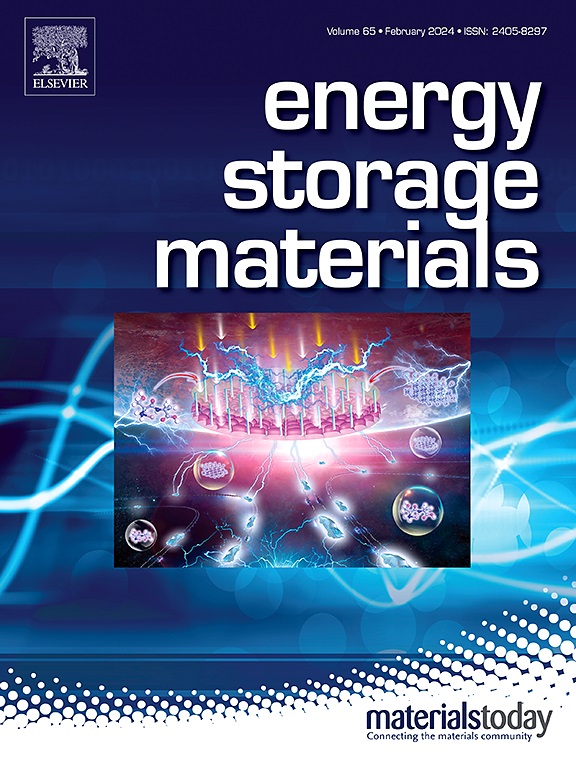处理后诱导的硬碳结构重构优化钠储存的研究进展
IF 20.2
1区 材料科学
Q1 CHEMISTRY, PHYSICAL
引用次数: 0
摘要
硬碳具有低电位、高容量、高稳定性和低成本等优点,被认为是下一代钠离子电池(sib)的首选负极材料。硬碳的制备和改性是实现其性能的重要步骤,为研究钠的储存机理提供了定期参考。后处理作为一种常规的改性方法,因其灵活性被广泛应用于材料的二次加工。后处理的优点是可以更直观地了解对结构的影响,有利于确定结构变化与性能差异之间的相关性。本文对硬碳的后处理进行了系统的总结和分析,包括机械加工、热重构、表面涂层、掺杂改性等。此外,还揭示了碳结构与电化学性能之间的关系。这些见解为硬碳的未来发展提供了深刻的前景,有望为开发下一代高性能sib提供重要指导。本文章由计算机程序翻译,如有差异,请以英文原文为准。
Post-treatment-induced structural reconstruction of hard carbon toward optimized sodium storage: A perspective and review
Hard carbon is considered as the preferred negative electrode material for the next generation of sodium-ion batteries (SIBs) due to its advantages of low potential, high capacity, high stability, and low cost. The preparation and modification of hard carbon are important steps in realizing its performance, and provide regular references for the study of sodium storage mechanisms. As a conventional modification method, post-processing is widely used for secondary processing of materials due to its flexibility. The advantage of post-processing is that it provides a more intuitive understanding of the impact on the structure, which is beneficial for determining the correlation between structural changes and performance discrepancy. This review provides a systematic summary and analysis of the post-treatment of hard carbon, including mechanical processing, thermal reconstruction, surface coating, doping modification. In addition, the relationship between carbon structure and electrochemical properties is unveiled. These insights offer profound prospects for the future development of hard carbon, which are expected to provide vital guidelines for developing next-generation high-performance SIBs.
求助全文
通过发布文献求助,成功后即可免费获取论文全文。
去求助
来源期刊

Energy Storage Materials
Materials Science-General Materials Science
CiteScore
33.00
自引率
5.90%
发文量
652
审稿时长
27 days
期刊介绍:
Energy Storage Materials is a global interdisciplinary journal dedicated to sharing scientific and technological advancements in materials and devices for advanced energy storage and related energy conversion, such as in metal-O2 batteries. The journal features comprehensive research articles, including full papers and short communications, as well as authoritative feature articles and reviews by leading experts in the field.
Energy Storage Materials covers a wide range of topics, including the synthesis, fabrication, structure, properties, performance, and technological applications of energy storage materials. Additionally, the journal explores strategies, policies, and developments in the field of energy storage materials and devices for sustainable energy.
Published papers are selected based on their scientific and technological significance, their ability to provide valuable new knowledge, and their relevance to the international research community.
 求助内容:
求助内容: 应助结果提醒方式:
应助结果提醒方式:


